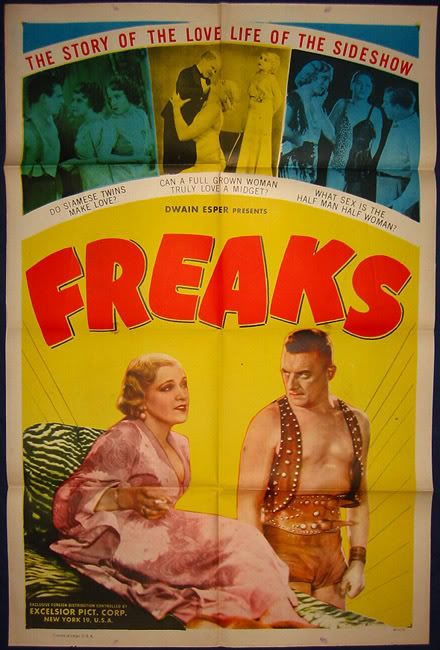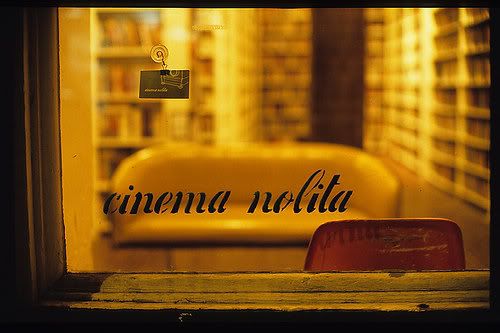Never as Good as the Second Time

Everything old is seemingly new again in this day and age. The studios are remake-crazy, especially when it comes to glossifying up old drive-in films: now, seemingly every horror film made between 1972 and 1988 will have to be preceeded by "the original" when talking about it. Of course, I'm not a knee-jerk elitist who always assumes that the original has to be the best - let's not forget that the best-known versions of The Wizard of Oz and A Star Is Born were not the first, and that Last House on the Left was actually a contemporary update of Bergman's The Virgin Spring. However, it does seem today that they don't remake 'em like they used to. Here are six remakes that are not only truly great, but I feel, superior to their original counterparts.
Kurosawa's samurai films were famously influenced by John Ford westerns, so it's ironic yet fitting that two of his best films would be remade in the very genre that inspired them. For my money, The Magnificent Seven is a wonderfully fun film but it really can't hold a candle to the beautiful nuance and majesty of The Seven Samurai. On the other hand, Yojimbo and A Fistful of Dollars are about equally great, Leone's film just ever so slightly more so, for kick-starting the spaghetti western subgenre and launching the careers of Clint Eastwood, possibly the only human being tough enough to inherit the crown of Manliest Man Ever from Toshiro Mifune. Though Leone would later indulge himself a little too much on his film's runtimes and pace, Fistful is a wham-bam-thank-you-ma'am affair, which makes its bleak and nihilistic outlook all the more satisfying.
Don Siegel's original Invasion was one of the best sci-fi movies of the 50's, and has been read as both an anti-Communist parable and an indictment of McCarthyism. Phillip Kaufman's re-do used this framework for one of the best subversively conservative genre pictures ever made: by shifting the action to flower child-populated San Francisco, his film is a sly satire of hippie herd-think, as the permissive, anything-goes attitude makes for the ideal setting for an alien takeover. The imagery is some of the most terrifying in any film and the cast is top-rate, the standout being Leonard Nimoy as a touchy-feely psychiatrist who is secretly in cahoots with the aliens.

Nosferatu the Vampyre (1979, Werner Herzog)
Max Shreck's Count Orlok was the cinema's first great boogeyman, and master director F.W. Murnau's film one of the few silent films that still has the ability to make you want to hide behind the couch. Werner Herzog's updating of the tale is almost devoid of shocks: a haunting and lyrical work that depicted a vampire's wrath as part of the universe's cyclical coming and going of chaos and entropy. And as portrayed by his man-muse Klaus Kinski, the titular character is less a nightmare beast than a truly pathetic, pitiable creature, for whom eternal life has brought nothing but loneliness and misery. Likewise, the film's horrors do not pop out from the shadows, but can be powerfully felt in the lingering shots of mummies during the opening credits, on the faces of nonchalant townsfolk in a village overrun by rats, and upon the milk-white brow and bottomless eyes of Isabelle Adjani's Lucy Harker.
Carpenter's best film is both a more faithful adaptation of Joseph Campbell's novella Who Goes There and an homage to his hero Howard Hawks, producer (and allegedly, also director) of the original. Here is a film that truly gets better with each viewing because it is so marvelously steeped in ambiguity. We're never told exactly how the titular body-possessing, shape-shifting creature works, whether it is capable of overtaking a human entirely or slowly possessing them, and how much of the characters' actions is caused by alien intrusion or by their own paranoia and anger. Puppetry and prosthetic effects had reached their peak with this film, although the gross-out shocks never feel gratuitous or overwhelm the story. It's really a shame that Carpenter has gone into semi-retirement, because we really need him today to show us just how masterful horror films can be.

The Fly (1986, David Cronenberg)
While the original Vincent Price film, is adored by the Famous Monsters of Filmland generation, I was never really that impressed with it - apart from the brilliant "help me!" scene, it's rather dull. Cronenberg's re-working of the tale, however, is a true masterpiece and one of the great films of the eighties, and one in which all of his body-horror hangups came together into a film that is deeply moving and profoundly human. Jeff Goldblum's slow transformation into a half-human-half-insect beast, to the horror and alienation of his girlfriend, becomes a metaphor for cancer, but the brutally unsentimental film avoids the syrupy trappings of almost any other movie ever made about sick people. Though the film is undeniably a yuck-effects masterpiece, the scenes of baboon implosions, fingernails falling off and maggot births wouldn't be as resonantly powerful if not for the deeply felt performances by Goldblum and Davis. Unlike the original, this isn't a movie about monsters, it's a film about human beings.
Cape Fear (1991, Marvin Scorsese)
Scorsese's most beaten up-upon film is a glorious and hysterical pop-art experiment masquerading as a big budget summer blockbuster; as drunk with cinema-love as his equally underrated New York, New York, only more fun. In the original classic by J. Lee Thompson, Gregory Peck is a decent family man pushed to extremes who must defend his angelic daughter and wife from cooly sadistic rapist Robert Mitchum. Scorsese keeps the plot essentially the same but drastically changes the characters: the Bowden family are dysfunctional and miserable behind the facade of their white picket fence, and De Niro's Max Cady, while insane, is a still more moral and virtuous than the supposed good guys. It's as if all of American fear cinema comes together in a blender here: the thrillers of the 60's are mixed with the bunny-boilers and unkillable slashers of the 80's; Cady's wardrobe pays homage to 70's kitsch and his tattoos to Night of the Hunter. Scorsese even reused the original's Bernard Herrmann score and gave Mitchum and Peck cameos as a kind-hearted cop and an Atticus Finch-style lawyer who unwittingly becomes a monkey wrench in the works. Of all the remakes that are indulgent homage/love affairs (like Jim McBride's Breathless and Peter Jackson's King Kong) this is one that really works beautifully.











